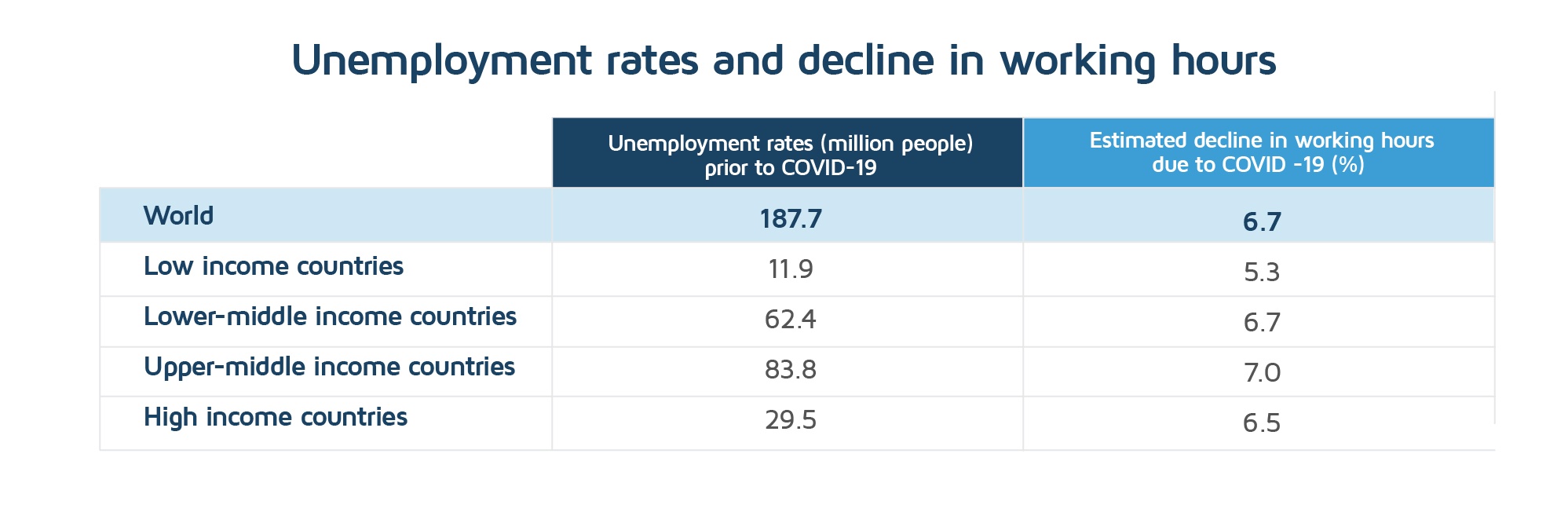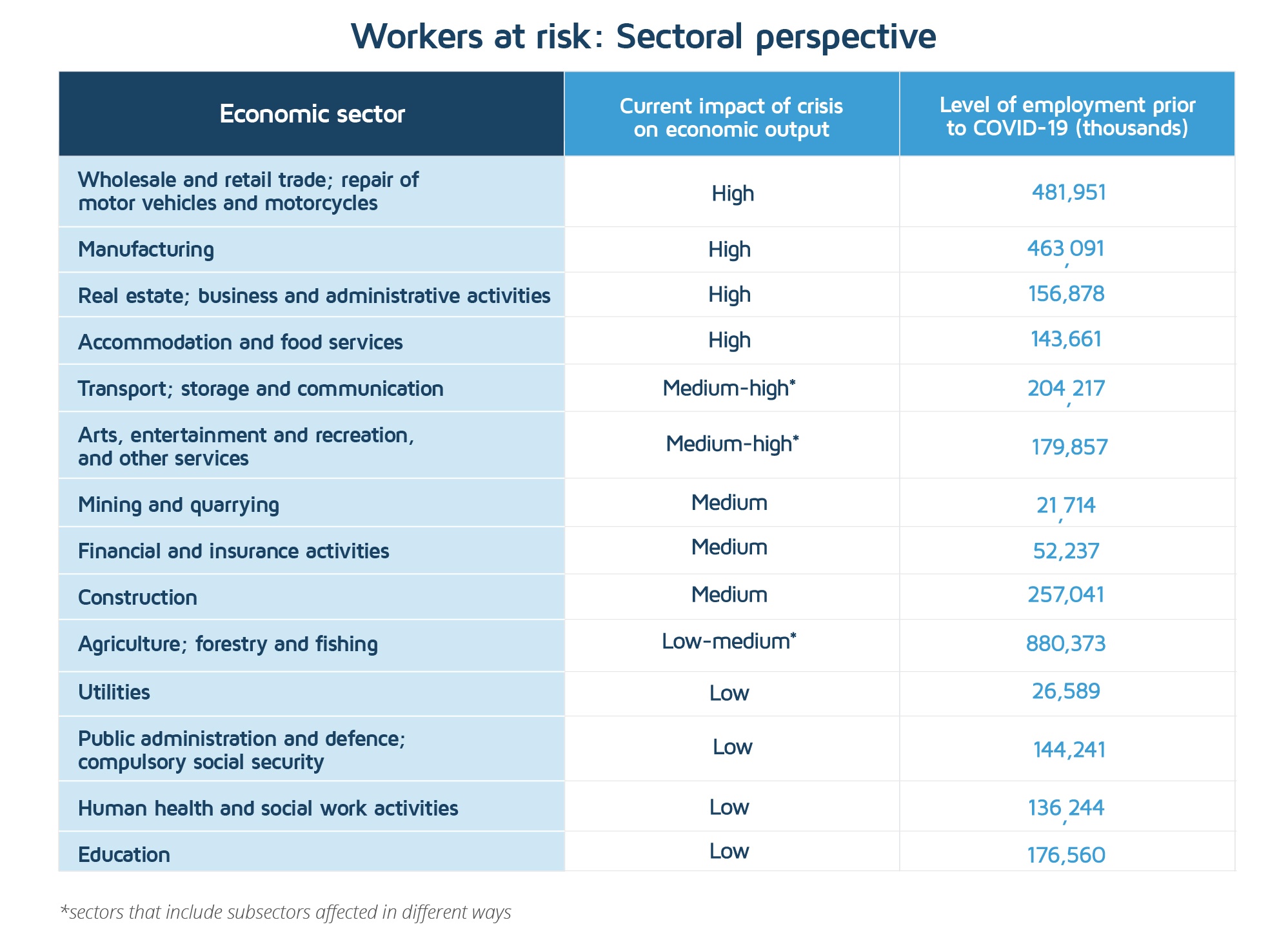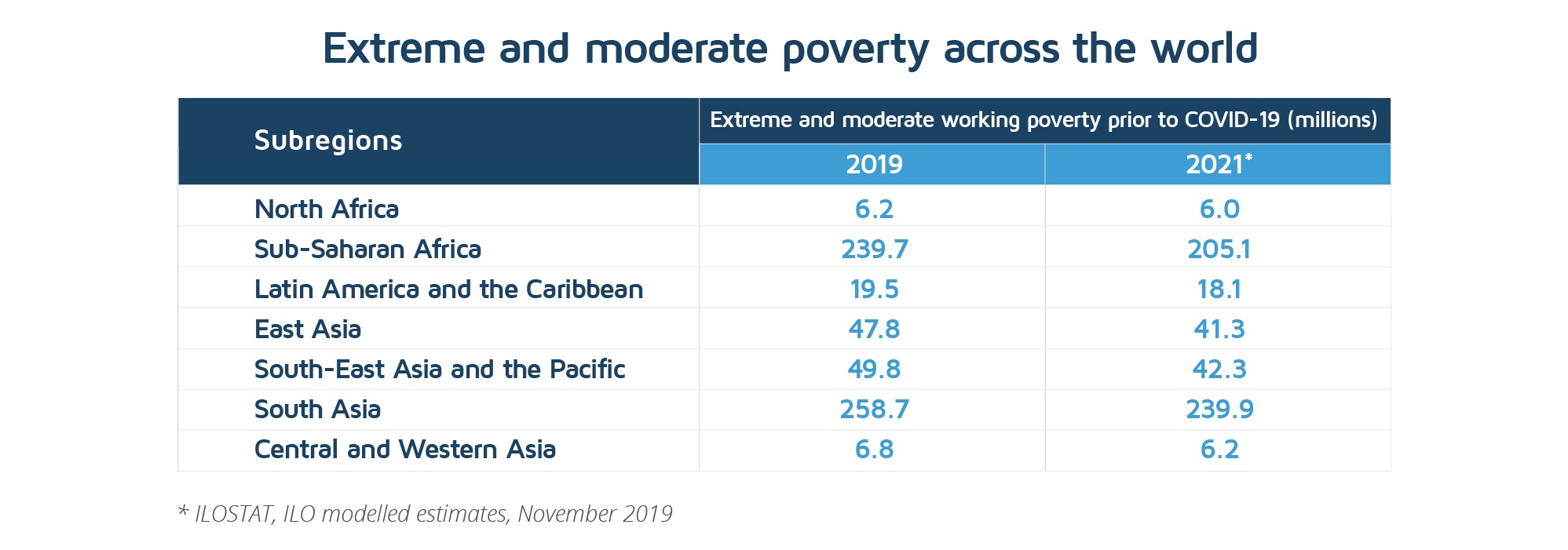Global unemployment rates are skyrocketing as the impact of the coronavirus outbreak becomes more and more evident. The reality is much tougher than the devastating statistic of an increase of tens of millions of people becoming unemployed, many more than the number initially forecast. Recent job losses have added to the total of those 188 million people who were registered as unemployed last year. In 2019, the world unemployment rate amounted 5.4%. While this crisis has affected about 81% of the world’s workforce, only the United States has revealed that 30 million people have lost their jobs over the past six weeks. A halt to the dramatic decline in the number of jobs and aggregate hours of work will depend on governments’ capacities to boost their economies during the second half of the year.

Dramatic decline in working hours
Indicators based on real-time economic and financial data point to a decline in working hours in the current quarter of about 6.7% which, assuming 48-hours working week, can be translated into 195 million full-time workers. These predictions involve a dramatic loss of income and a possible fall into poverty for employees. Many enterprises will face long-lasting repercussions, especially in developing countries where the fiscal space for economic stimulation is constrained.
The coronavirus outbreak has already affected 3.3 billion people employed worldwide. However, the most drastic fall in output can be observed in four sectors in particular which account for 38% of the global workforce: accommodation and food services, manufacturing, wholesale and retail trade, and real estate and business activities. Millions of low-paid and less-skilled workers involved in these intensive labor sectors face a dramatic decline in working hours, wage cuts and lay-offs, thus contributing to growing trends in the world unemployment rates.

An increase of workers falling into poverty is expected
About two billion people working in the informal economy are particularly at risk due to the widespread coronavirus pandemic. On behalf of the major share of the global unemployment rate, these workers represent a fragile category and already face limited access to health and social protection, a lack of safety and decent working conditions. They will suffer further poverty if authorities are not able to ensure immediate support for the most affected sectors and population groups. In India, about 400 million workers in the informal economy could experience even further poverty.
Over 630 million workers around the world do not earn enough money to overcome poverty. Despite encouraging estimates before COVID-19, which confirmed a decline of 14 million in the number of people working in poverty in 2020, the current trends has resulted in an additional number of at least 8.8 million people. The worst-case scenarios predict an increase of people working in poverty up to 35 million compared to the pre-COVID-19 statistics.

The extreme and moderate poverty rates presented above rely on a daily per capita income or consumption of less than US$1.99 and between US$1.90 and US$3.20 in PPP. The working poverty rate is negligible in North America, Northern, Southern, Western and Eastern Europe. Before the coronavirus and the resulting quarantine measures, forecasts had indicated a decrease of 11% in extremely poor workers and of 10% in moderately poor workers over the next five years. However, the number of those working in poverty is projected to increase in low-income countries because of governments’ incapacity to create jobs with an income above the poverty line. These trends highlight the unlikelihood of being able to meet the SDG target of eradicating extreme poverty by 2030.
Uncertain prospects regarding the pandemic’s impact
The economic fallout is going to be felt far beyond the immediate impact of the pandemic and beyond the global unemployment rate. Rebuilding the global economy will require active fiscal policy and financial support to specific sectors. Along with measures designed to assist informal workers, efforts are needed to support formal workers and enterprises in order for these to avoid informality as a result of the outbreak. Governments should take into consideration employment retention measures together with financial/tax and other relief for enterprises. Advanced economies have already announced extraordinary measures such as meeting the drops in income and demand, extending social protection and stabilizing financial markets. Similar initiatives should be ensured in low- and middle-income countries to boost their economic activity especially in the lowest-income countries where international support appears to be critical in addressing the consequences of the crisis. Taking into account the great level of uncertainty regarding the magnitude of the crisis and its repercussions, assessing the real impacts seems to be, as yet, premature.
Subscribe to DevelopmentAid news and get access to the most relevant information about COVID-19 and international development.

